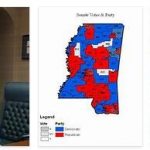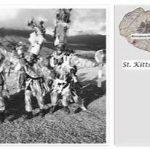
Hungary Politics and History
Political order. – The events preceding the Second World War and the first phases of the conflict (see below) allowed Hungary, allied with Germany and Italy, to recover a large part of the lost territories, as indicated by the attached table:
The enlargement of Hungary took place from 1938 to 1941 in four phases. With the first arbitration in Vienna (November 2, 1938, Hungary obtained a strip of territory from Czechoslovakia (from 2 to 65 km wide), located along the Hungarian-Slovakian and Ruthenian border. extended over 11,927 sq. km., counted 1,041,000 residents and included the centers of Komárom (Komárno), Kassa (Košice) and Munkács (Mukačevo). occupy Sub-Carpathian Russia, but since the borders of this region had never been precisely marked, following a Hungarian-Slovak agreement (4 April 1939), a strip of Slovak territory was added to protect the Ungvár area, with a total area of 12. 061 sq. Km. and a population of 588,000 residents With the second Vienna arbitration (30 August 1940), Hungary regained MaramureŞ, part of Crisana and that part of eastern Transylvania including the territory of the Székely, with a predominantly Hungarian population; Hungary thus recovered, without a shot being fired, a territory of 43,104 sq km. with 2,392,000 residents Finally, in April 1941, the Hungarian troops occupied the Bačka, part of the Baranja and the territory of the Mur (on the left of the Drava); this fourth enlargement made Hungary buy 11,301 sq km. with 1,518,000 residents
The peace treaty of 10 February 1947 brought Hungary back within the limits set by the Trianon treaty, with a slight adjustment in favor of Czechoslovakia near the triple Hungarian-Austrian-Czechoslovakian border. For Hungary government and politics, please check a2zgov.com.
History – On 1 and 9 July 1937 the two Chambers approved the new law concerning the election and powers of the regent, who is authorized, under the law, to propose names for his succession and cannot be called to answer by Parliament. In the months that followed, the intensification of the propaganda and action of groups with a National Socialist tendency was remarkable: on October 18 various right-wing organizations merged into the “Hungarian National Socialist Party”; a few days later 69 National Socialists were sentenced, to various penalties, by the court of Budapest, on the charge of having organized a military uprising to establish in Hungary a totalitarian regime with a National Socialist tendency. Other arrests and convictions followed in November 1937 and February 1938.
However, despite these repressive measures, an undoubted repercussion on public opinion and on the very work of the government of these new political trends has been felt in the fact that in Hungary too, in recent times, the “Jewish question” has arisen. The very large participation of Jewish elements in the commercial and financial activity of the nation, participation due to the fact that the Hungarian nobility, that is to say the ruling class of Hungary, had disdained trade; and, moreover, the fact that, thanks to the interest loans granted to the nobles, many Jews had been able, by means of mortgages, etc., to become de facto owners of part of the same landed property, constituted the premise for the anti-Semitic reaction, which in in recent times it has developed, as has been said, very quickly and intensely. A consequence of this movement was, in April 1938, the approval of the law of “quota”: for it the participation of the Israelites in the various professions is limited to 20%.
In addition to this, the intensification of work for national defense is also noteworthy (one billion pengö was made available to the government, with the law of 9 April 1938, for this purpose); and the accentuation of state intervention in economic life (decrees of 10 April 1938).
The most decisive right-wing orientation of Hungarian political life had its final expression in the change of ministry: in the Daranyi cabinet (who had already resigned for the first time on 9 March 1938, but reconstituted the same day), on 13 May, the cabinet chaired by B. Imredy, made up of men all belonging to right-wing parties.
Finance (p. 684). – Here are the figures, in millions of pengö, of the balance sheets since 1934:
At December 31, 1937, the external debt amounted to 1.1 billion and the internal debt to 0.5 (of which 0.1 is consolidated). Thanks to the exchange control introduced in July 1931, the nominal gold value of the pengo was maintained. From 1932, however, the bank began to pay premiums on bills which at the end of 1935 were unified around 50%.
As of December 31, 1937, notes in circulation amounted to 466 million and the reserve was 84 million in gold and 59 in foreign exchange.








